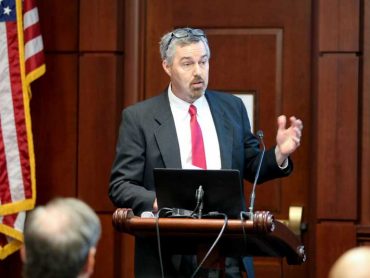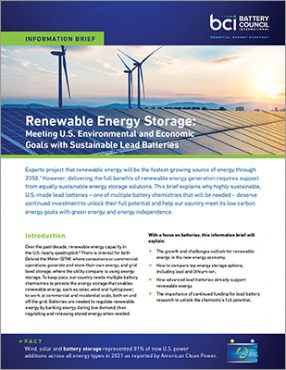
Our guest blogger, Roger Miksad, Executive Vice President of Battery Council International, recently authored an op-ed in Capitol Weekly, highlighting the important role of lead batteries to power essential communications infrastructure during natural disasters such as California wildfires. California legislators are considering several bills to require backup power to protect residents and their property – and Miksad encourages the lawmakers to include lead batteries in those plans.

Regardless of annual rainfall, California always faces warm summer temperatures and dry conditions that pose a high fire risk throughout the state. In response to recent, destructive wildfires, utilities are now implementing widespread “deenergization” events, cutting off power to millions of Californians.
Several bills, including SB 925 (Glazer), SB 431 (McGuire), and SB 1099 (Dodd), have been introduced in the Legislature to require emergency backup power solutions that will power communication systems and other critical infrastructure during wildfires and periods of forced power outages.
There is a growing concern that increasing the state’s reliance on fossil-fuel backup power options already in use by many Californians will keep power on at the expense of increased emissions of toxic air contaminants and greenhouse gases. These same systems may also create additional fire risks. During the power shutoffs in October 2019, a reported 125,000 portable gasoline-powered generators and almost 1,810 diesel-powered stationary generators were used, producing emissions equivalent to about 29,000 heavy duty trucks.
While fossil-fuel generators provide long-term power options when outages extend beyond a few days, for shorter duration outages California needs a battery backup power solution that checks all the critical boxes – a safe, sustainable and environmentally-friendly power source that provides sufficient back-up power to protect residents and their property. Lead batteries are an essential part of that solution.
Lead batteries are the dominant technology used to support telecommunications systems such as 911 call centers and cellular phone towers, and to deliver an uninterruptible power supply (UPS) to life-saving equipment in hospitals.
Lead batteries have delivered safe, reliable, mission-critical energy backup in these applications for decades. Lead battery systems also provide emergency backup power and solar panel battery storage for homeowners, commercial buildings and data centers. And grid-scale lead battery energy storage systems have been installed around the world; three world-class systems in California are showcased on the Consortium of Battery Innovation (CBI)’s global interactive map.
The range of scale, safety, reliability and application adaptability of lead battery energy storage systems means that they are well-suited to safeguard the critical communications, data and healthcare infrastructure that so many people depend on during emergency situations.
Lead battery energy storage systems are also at the forefront of the state’s shift toward a circular economy. The California Environmental Protection Agency (CalEPA) is establishing policies that promote circular economies for high volume products, including improving the collection and recycling infrastructure to reprocess these products at end of life.
The lead battery industry is ahead of almost all other sectors in achieving the state’s circular economy goals, having recycled nearly all end-of-life lead batteries for more than two decades. According to an ING survey, they are part of the 16% of American industries that already have created closed loop systems that emphasizes sustainable management practices at each step of the product life cycle.
With this closed loop system, the lead battery industry is leading the way toward a truly renewable clean energy future:
- Nearly all lead batteries are recovered and recycled, making it the most successfully recycled consumer product;
- The lead battery industry has a strong U.S. manufacturing base, supporting nearly 92,000 jobs across the country – including several thousand in California.
- A majority of the lead used to manufacture new batteries in North America is sourced from lead battery recycling facilities in North America;
- A new lead battery is typically comprised of more than 80% recycled material;
- 4.5 million tons of greenhouse gas emissions are eliminated annually through start-stop vehicle technology using lead batteries;
- Lead batteries will help enable more rapid penetration of renewable energy sources by expanding the state’s energy storage capacity.
State legislators must act quickly as the fire season approaches.
Lead batteries are safe and do not add to fire risk, they are a proven, reliable, affordable and readily accessible power source, they are at the forefront of circular economy policy, and they provide an immediate solution to the many challenges posed by fires and forced power outages.
As policymakers look for backup energy solutions that meet all the requirements needed in times of emergency, lead batteries should be at the top of the list.






